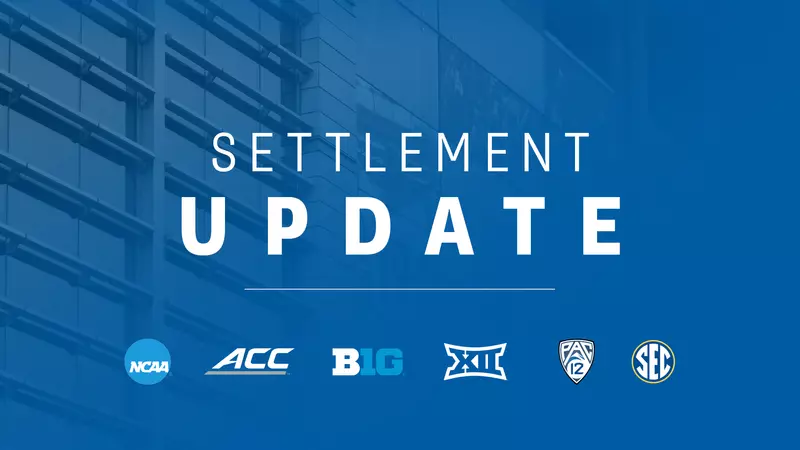On Friday, formal documents concerning a settlement were submitted to the Northern District Court of California to facilitate the approval of a settlement aimed at resolving class-action lawsuits involving the NCAA as well as several major conferences, namely the Atlantic Coast Conference, Big Ten Conference, Big 12 Conference, Pac-12 Conference, and Southeastern Conference (Autonomy 5 conferences).
The submitted settlement documents pertain to three lawsuits: House v. NCAA, Hubbard v. NCAA, and Carter v. NCAA. These cases focus on compensation for past damages and future benefits for Division I student-athletes.
“This marks another crucial milestone in our continuous effort to enhance benefits for student-athletes while establishing a stable framework for the future of collegiate athletics,” stated the commissioners of the five conferences along with the NCAA president. “Though there are still many steps ahead in the settlement approval journey, this is a significant advance towards providing clarity for Division I athletics while ensuring an enduring education-based sports model, allowing student-athletes the chance to earn degrees and acquire the necessary skills for life after sports.”
The Settlement Overview
The settlement tackles three key areas: compensation for back damages related to name, image, and likeness (NIL) rights, academic rewards, and additional benefits; enhanced future benefits for student-athletes, including more NIL opportunities directly from their institutions; and the removal of scholarship limits in favor of roster size limits.
- The agreement stipulates approximately $2.78 billion in total back damages, to be distributed over ten years, which averages around $280 million annually determined by the plaintiffs.
- Under the proposed framework, member institutions from the A5 conferences (and other Division I schools opting into this new structure) would be permitted to provide greater benefits to student-athletes, including NIL opportunities. If the court approves this change, institutions could allocate up to 22% of average Autonomy 5 revenue from media, tickets, and sponsorships to student-athletes beginning in the 2025-26 academic year, potentially resulting in $1.5 billion to $2 billion in new annual benefits.
- Scholarship limits will be abolished across all sports, with roster limits established, allowing institutions to offer both full and partial scholarships as long as they remain within the defined roster limits.
Future Steps
The proposed settlement awaits court approval to become finalized, a procedure expected to take several months. Should the court grant preliminary approval, class members will be informed about the settlement. Those with claims for monetary relief based on past actions will have the choice to opt out. Additionally, incoming student-athletes and others in the class will receive notifications and be allowed to voice concerns about the relief model to the court.
Outstanding Challenges
While a settlement approval would signify substantial progress, several unresolved issues remain, underscoring the necessity for federal legislation. Key challenges include:
- The proposed settlement does not address the existing maze of state laws that may conflict with it, necessitating federal legislation to preempt these laws for effective implementation.
- The settlement does not confront ongoing initiatives aimed at classifying student-athletes as employees under state and federal labor laws, which could jeopardize the sustainability of various sports programs and the support given to all athletes.
“This settlement represents a vital stride forward for both student-athletes and college athletics, yet it does not resolve all existing challenges,” remarked the A5 conference commissioners in conjunction with the NCAA president. “The requirement for federal legislation remains. Without congressional action, the advancements made through this settlement could be significantly undermined by state laws and ongoing litigation.”



